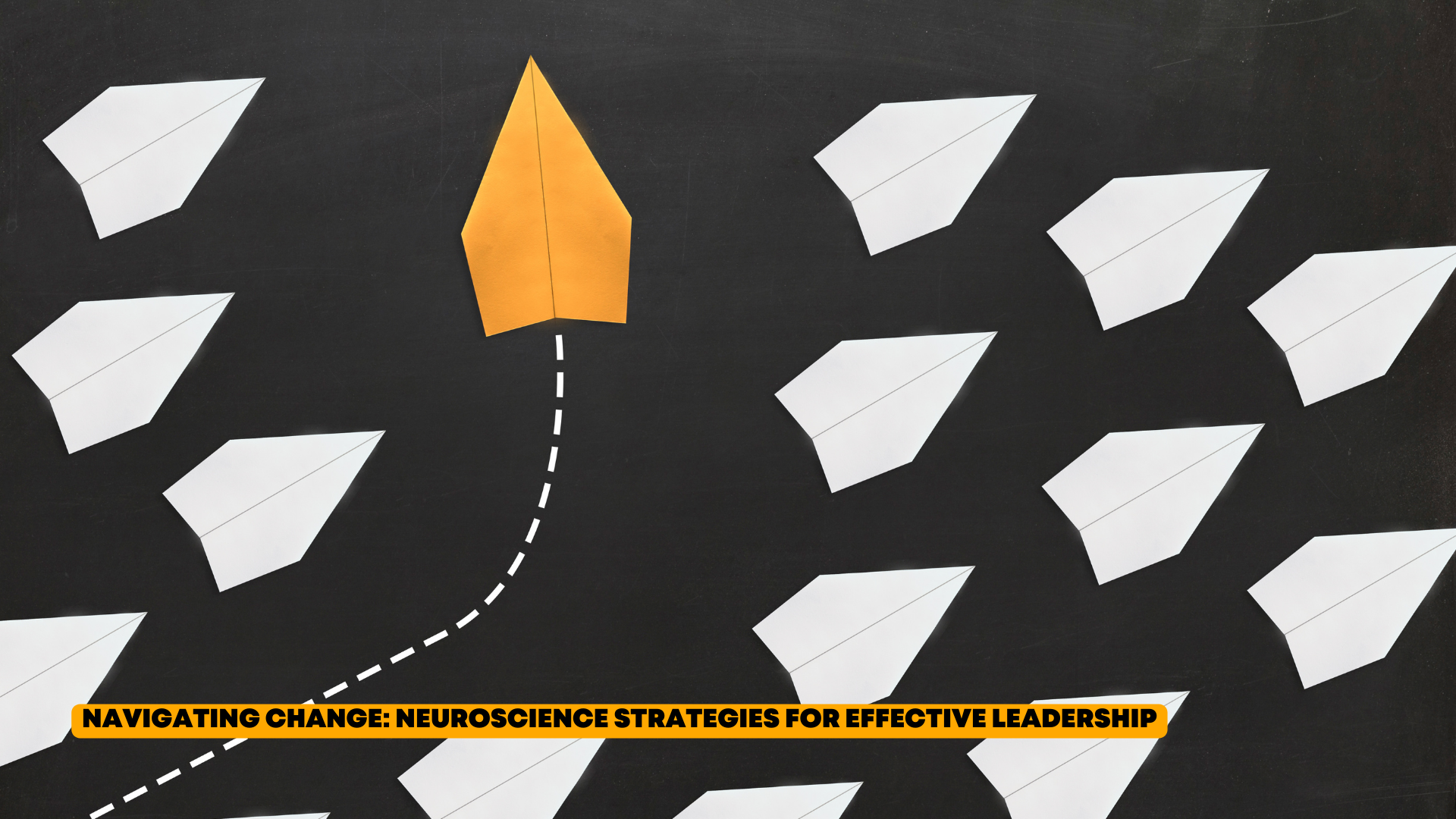Leadership Strategies for Enhanced Teamwork and Innovation
Did you know that your brain actually loves teamwork? Yep, it’s wired to thrive on collaboration and connection! But, most teams aren’t tapping into their full potential. Ever wonder why?
In this article, we’ll unpack some strategies that can turn any group of individuals into a cohesive, high-performing team. We’ll explore how trust, emotional intelligence, and inclusive decision-making can light up your team’s collective brainpower. Whether you’re leading a tech startup or managing a finance crew, these insights will help you create a team that doesn’t just work together – they click.
The Neuroscience of Teamwork
So, let’s get into how our brains play a starring role in team dynamics. Neuroscience isn’t just for lab coats and beakers; it’s all about understanding how our grey matter helps us connect, collaborate, and create. When we talk about team success, it boils down to a few fundamentals: trust, psychological safety, and emotional intelligence. Let’s break it down!
Trust and Psychological Safety
Our brains are wired to seek safety and connection. When we feel trusted and safe, our brains release oxytocin – the “love hormone” – which boosts our sense of well-being and cooperation. Trust me, without this, your team is basically a group of individuals playing tug-of-war instead of rowing in sync.
Imagine your brain as a cozy campfire. When you’re in a trusting, safe environment, that fire is roaring, lighting up all the best ideas and connections. But if trust is missing? It’s like trying to start a fire with wet wood – frustrating and almost impossible.
Research from the Center for Creative Leadership shows that trust isn’t just a feel-good concept; it’s a performance booster. Teams with high trust levels are more innovative, resilient, and engaged. They’re not just working together; they’re firing on all cylinders. When team members feel psychologically safe, they’re more likely to share bold ideas and take risks without fearing ridicule or backlash.
Let’s take a step back and remember my chaotic team from earlier. Once I understood how critical trust and safety were, I focused on building these elements. We started with simple things – honest conversations, consistent follow-through, and celebrating small wins. Slowly but surely, the vibe shifted. People began to open up, share their wildest ideas, and collaborate like never before. It was like watching a fragmented puzzle come together to form a beautiful picture.
In a nutshell, if you want a team that’s not just surviving but THRIVING, you’ve gotta prioritize trust and psychological safety. Think of them as the secret sauce that makes everything better.
Emotional Intelligence
Think of EI as the glue that holds everything together but with a superpower twist. It’s about recognizing, understanding, and managing our own emotions while also tuning into the emotions of others.
And guess what? Research from the Journal of Management & Organization shows that teams with high EI are not only more collaborative but also way more innovative.
Why? Because they handle stress like pros, communicate like champs, and truly get each other’s vibes. It’s like they’re speaking the same language, even when they’re not.
So, how do you sprinkle this magical EI dust on your team? Here are some actionable steps to get you started:
Self-Awareness Exercises: Start with the basics. Encourage team members to keep a journal to track their emotions and reactions. Simple prompts like “What made me feel stressed today?” or “What was my happiest moment?” can help them tune into their emotional states.
Empathy Workshops: Host workshops where team members practice empathy. Use role-playing scenarios where they have to put themselves in each other’s shoes. This isn’t just a fun icebreaker; it’s a powerful way to build understanding and compassion.
Feedback Sessions: Create a culture where feedback is not only given but welcomed. Regularly scheduled feedback sessions can help team members understand how their actions impact others, fostering a sense of accountability and growth.
Mindfulness Training: Introduce mindfulness practices like meditation or breathing exercises. These can help team members manage stress and stay present, which is crucial for maintaining emotional balance.
Celebrate Emotional Wins: Recognize and celebrate moments when team members demonstrate high EI. Did someone handle a tough situation with grace? Shout it from the rooftops! Positive reinforcement can motivate everyone to keep growing their EI skills.
By focusing on emotional intelligence, you’re not just building a team; you’re creating a cohesive unit that’s ready to tackle any challenge with creativity and resilience.
The Power of Inclusive Decision-Making
Let’s talk about how neuroscience backs the brilliance of inclusive decision-making. Research shows that involving team members in decisions activates the brain’s reward circuitry, specifically the striatum. This not only boosts motivation but also enhances the sense of ownership and commitment to the decision. When people feel heard and valued, they’re more likely to bring their A-game.
Inclusive decision-making taps into the brain’s craving for connection and recognition. When team members collectively brainstorm and make decisions, it creates a shared vision that everyone is invested in. This collective intelligence not only leads to better decisions but also fosters a strong sense of community and trust within the team. So, if you want to supercharge your team’s creativity and efficiency, start by making decision-making a team sport.
Inclusive decision-making leverages the diverse strengths and perspectives of all members, leading to better decisions and a more cohesive, motivated team.
Let’s get down to the nuts and bolts of building trust within your team. Trust isn’t something you can sprinkle like fairy dust – it takes consistent effort and a whole lot of transparency. Here are some strategies to get you started:
Share information openly with your team. Whether it’s good news or bad, keeping your team in the loop builds trust and shows that you value their involvement. It’s like having a family meeting where everyone’s in on the plan.
If you say you’re going to do something, DO IT. Nothing erodes trust faster than broken promises. Think of it as building a trust bank – every commitment kept is a deposit, and every one broken is a withdrawal.
Create a safe space for team members to express their thoughts and concerns. Regular check-ins and open forums can help. Remember, trust grows in an environment where people feel heard and understood.
Acknowledge and celebrate the team’s achievements, no matter how small. This not only boosts morale but also reinforces a culture of mutual respect and appreciation.
Leveraging EI
Now, let’s talk about injecting some serious emotional intelligence (EI) into your team’s veins. Implementing EI training programs can transform your team dynamics. Here’s how to get started:
Conduct EI Assessments: Start by assessing the current EI levels within your team using tools like the Emotional Quotient Inventory (EQ-i). This will help identify areas for improvement.
Host EI Workshops: Organize workshops that focus on self-awareness, self-regulation, social skills, empathy, and motivation. These can include role-playing scenarios, mindfulness exercises, and team-building activities.
Promote Reflective Practices: Encourage team members to keep journals or engage in regular reflection sessions. This helps them become more aware of their emotions and how these impact their interactions with others.
Provide Continuous Feedback: Regular, constructive feedback helps team members understand their emotional triggers and develop better coping strategies. Make feedback a two-way street – it’s as much about listening as it is about speaking.
Creating Inclusive Processes
Finally, let’s nail down how to establish inclusive decision-making forums that harness the collective brainpower of your team:
Set Up Regular Brainstorming Sessions: Create a schedule for regular brainstorming sessions where every team member is encouraged to share ideas. Use techniques like round-robin brainstorming to ensure everyone gets a chance to speak.
Create Cross-Functional Teams: Involve members from different departments or areas of expertise. This diversity of thought can lead to more innovative solutions and helps break down silos within the organization.
Establish Clear Decision-Making Protocols: Define and communicate the decision-making process clearly. Whether it’s voting, consensus, or another method, make sure everyone understands how decisions will be made and how they can contribute.
Use Collaborative Tools: Leverage technology to facilitate collaboration, especially if your team is remote. Tools like Trello, Slack, or Microsoft Teams can help keep everyone on the same page and ensure that ideas and feedback are easily shared.
Measurable Outcomes
Performance Metrics
So, you’ve implemented all these strategies – how do you know if they’re working? Time to talk numbers! Measuring the impact of collaborative strategies isn’t just about feeling good; it’s about seeing real, tangible results. Here are some key performance metrics to keep an eye on:
Track the output of your team before and after implementing collaborative strategies. Look for increases in completed tasks, project turnaround times, and overall efficiency. Tools like Asana or Trello can help you monitor these metrics.
Measure the number of new ideas generated and implemented. This can be tracked through innovation logs or brainstorming session outcomes. The more inclusive and emotionally intelligent your team becomes, the more innovative ideas you’ll see.
Use surveys to gauge how engaged and satisfied your team members are. Higher engagement usually translates to better performance and lower turnover rates. Platforms like Gallup or Qualtrics can be handy for this.
Assess the frequency and quality of collaboration. You can track collaborative projects, cross-departmental interactions, and the usage of collaborative tools. Regular feedback from team members about their collaboration experience is also crucial.
Trust might seem intangible, but it can be measured through regular team surveys and feedback. Look for metrics like mutual support, reliability, and openness in communication.
Success Stories
Let’s dive into some real-life examples of organizations that have knocked it out of the park using these strategies.
Google’s Project Aristotle: Google conducted an extensive study on team effectiveness, known as Project Aristotle. They found that the most successful teams had high levels of psychological safety, dependability, structure, clarity, meaning, and impact. By fostering these qualities, Google teams became more innovative and productive, leading to breakthrough products and solutions.
Pixar’s Brain Trust: Pixar, the animation powerhouse, uses a collaborative approach known as the Brain Trust. This involves regular feedback sessions where team members at all levels can critique and contribute to projects. This inclusive decision-making process has been instrumental in creating some of the most beloved animated films. The result? Consistently high-quality, innovative movies that resonate with audiences worldwide.
Bridgewater Associates: This hedge fund giant uses a radical transparency model where employees at all levels are encouraged to openly discuss mistakes and learn from them. This approach builds trust and promotes continuous improvement. Their success is evident in their sustained performance and innovative investment strategies.
Patagonia’s Environmental Initiatives: Patagonia, known for its commitment to sustainability, involves employees at all levels in decision-making processes related to environmental initiatives. This inclusive approach has led to innovative solutions and a strong, engaged workforce dedicated to the company’s mission. Their collaborative culture is a key driver of their business success and environmental impact.
Zappos’ Holacracy: Zappos implemented a unique organizational structure called Holacracy, which eliminates traditional hierarchies in favor of a more flexible, team-based approach. This structure empowers employees to take ownership of their work and make decisions collaboratively. The result has been a highly adaptive, innovative, and motivated workforce.
These success stories highlight how focusing on trust, emotional intelligence, and inclusive decision-making can transform team dynamics and drive remarkable outcomes. By measuring the right metrics and drawing inspiration from these examples, you can guide your team to new heights of collaboration and innovation.
So, what’s next?
It’s time to put these insights into action! Start small – maybe with a few trust-building exercises or a mini EI workshop. Gradually introduce inclusive decision-making forums and watch as your team starts to click in ways you never thought possible. Remember, change doesn’t happen overnight, but with consistent effort, you’ll start seeing the magic unfold.
















